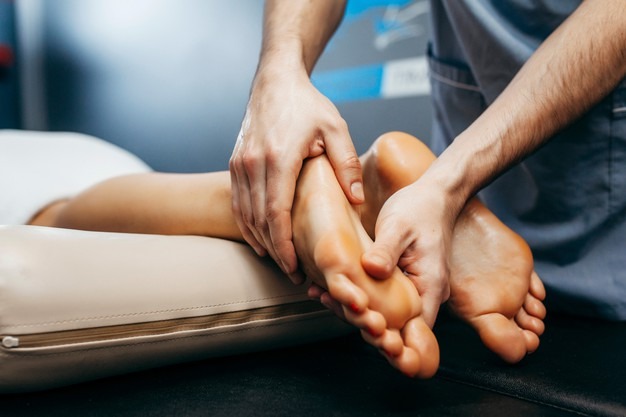- Have any questions?
- +91-9811443717
- info@dranujchawla.com
Everything about Plantar Fasciitis and different treatment option to cure it

Can HyProCure surgery help in flatfoot treatment?
June 17, 2021
Things To Consider If You Have Flatfoot & want a permanent cure
August 10, 2021Everything about Plantar Fasciitis and different treatment option to cure it

Your stabbing heel pain can be an indication of a foot problem called Plantar Fasciitis. It occurs due to the inflammation of the plantar fascia, which is a thick bundle of tissue responsible for connecting the heel bone to the toes. Anyone suffering from this problem may experience difficulty in taking the first steps in the morning or after sitting for a long time.
How can Plantar Fasciitis be cured?
This foot problem can be cured after following an appropriate treatment plan. If the problem is in the initial stage, it can be cured by participating in some physical therapy sessions including calf stretching and regular heel stretching exercises. Apart from that, modifying footwear and use of customized insoles with heel cushion is also recommended. In some cases, a doctor may recommend injection of steroid or Platelet Rich Plasma (PRP) in the heel to cure the disease. Though steroid may be helpful in short term, its use has to be guarded as it is associated with increased risk of complications like plantar fascia rupture.
In severe cases, the risk of disability increases with the progression of Plantar Fasciitis and hence your doctor may recommend you to undergo surgery. The recommended type of surgery and rehab plan may be unique for each patient as it is planned according to the patient’s condition.
Types of surgical procedures for Plantar Fasciitis treatment
- Open Plantar Fasciotomy
In this type of surgery, an incision of around 1-2 inch is made to detach plantar fascia and remove all the obstructions like trapped nerves and bone spurs. The foot & ankle surgeon may suggest undergoing open plantar fasciotomy after considering factors like incision placement, plantar fascia release and its post-release rehab. There are many approaches to perform this type of surgery. These are:
- Plantar incision:It is the traditional approach to treat plantar fasciitis by detaching the ligament and clearing all the debris like a bone spur.
- In-step plantar approach:It is a modified variant of the traditional approach wherein only a part of the plantar fascia is released in the initial phase, which encourages fast post-surgery healing and involves minimal risk.
- Medial plantar fasciotomy:In this approach, the plantar fascia is accessed from the inner side of the proximal medial arch. The ligament release is only performed after ensuring the anatomy and alignment of the foot. It is associated with removal of any existing bone spurs as well. It is a less invasive procedure, but requires a highly experienced surgeon to perform the surgery through this approach.
While plantar fasciotomy is associated with relief in the heel pain in most of the cases, it might lead to some complications due to alteration of overall foot biomechanics after release of plantar fascia.
- Endoscopic Plantar Fasciotomy
This type of surgical procedure is minimally invasive & traumatic when compared with open plantar fasciitis release option. This procedure is performed with the help of an endoscopic camera and takes a shorter time in recovery. A specific set of instruments is required to peform this surgery.
- Proximal Medial Gastrocnemius Release (PMGR)
Plantar Fasciitis can alter the biomechanics of the lower limb, which can lead to gastrocnemius contracture. If plantar fasciitis is associated with gastrocnemius contracture, that is confirmed with the help of Silfverskiold’s test, a release of gastrocnemius muscle is performed. There are many techniques with which the muscle can be released including the traditional Strayer release and Proximal Medial Gastrocnemius Recession (PMGR). In PMGR, the muscle is released just under the back of the knee. The advantage of this release is that it can be performed as a day care procedure under local anesthesia also. The patient is allowed to walk immediately after the surgery and can be discharged the same day. It is also not associated with the risks associated with plantar fascia release which alters the overall biomechanics of the foot. According to a Spanish retrospective study published in 2013, the overall success rate of PMGR is better than plantar fasciotomy with minimal risks involved. Hence, this is the recommended procedure for plantar fasciitis if associated with a tight gastrocnemius muscle.
So these are ways to treat plantar fasciitis & get relief from heel pain. If you want to get medical help to treat any foot problem, book an appointment with Dr. Anuj Chawla, a trusted and experienced foot and ankle surgeon. He has more than ten years of experience in foot and ankle surgery and has helped numerous people in getting rid of foot problems.

